Another Timbre TimHarrisonbre
Radical liminality —
reflections on Another Timbre's Canadian Composers Series
by Nick Storring
Canada is a downright odd country. Yet, whether you're Canadian, or from elsewhere, "odd" isn't likely the first word that the springs to mind when tasked with describing it. However I'd argue that it's actually as apt as any.
For a number of reasons, Canada seems to inspire all manner of different narrative overlays—all of varying degrees of accuracy. Among the least densely populated countries in the world, it's also the second largest and thus rife with unfathomably large stretches of land that remain unknown even to the majority of its inhabitants. July 1st, 2017 also marks the 150th anniversary of the country's confederation, making it a rather young nation. It's tempting—for both its settler populations and the global community—to treat it like a somewhat of a blank canvas.
Apart from all the notorious meteorological and grandiose topographical stereotypes, internationally there's a lot of speculation about the demeanour of Canadians themselves. They're variously characterized as meek, warm, quaint, benevolent, tolerant, dull and/or parochial. Visitors note our constant compulsion to say "sorry." General impressions of the country vary wildly too—some regard it as little more than a northern satellite of the United States, others assume it's a vacant frostbitten hell-scape.
And strange, semi-fictional superimpositions are also propagated from within. Our much-touted multiculturalist mythos, for instance, looms large, but belies underlying tensions (cf. "maple washing"). Both English and French enjoy official language status yet our bilingualism statistics reflect a different reality. There's also a routinely stated desire to distance ourselves from both our colonial roots and our southern neighbours, yet at the same we're still perpetually comparing ourselves and even at times seeking approval.
No matter how you look at it, Canadian identity is a very complicated proposition. Cynics would posit there's almost a reluctance to formulate one at all, yet a more charitable and nuanced assessment recognizes the advantages of permitting the national self-concept to remain malleable and diffuse.
As always, adding the artistic questions to the equation only further confuses matters.
Within the international arena, Canadian composers of experimental concert music mostly remain overshadowed by their European and American counterparts. While this is definitely shifting thanks to the efforts of a number of ensembles, presenters, as well as some crucial recording initiatives (such as this one), by and large the visibility of these artists is still limited, in spite of their uniqueness and relevance.
I'll avoid attempting to enumerate all of the different factors involved in inhibiting their wider exposure. I'm neither in a position to do so, nor am I at all interested in casting my compatriots and colleagues as underdogs. It's far more complex than that.
Yet, quite apart from its potentially adverse effect on anyone's prominence, I do feel that it's important to consider the enduring impact of 20th century avant garde ethos and its concomitant historical thinking on our present value system that surrounds contemporary composition. Although recent years have seen a fewer musicians and composers investing in founding new artistic movements or compositional systems, work of an experimental bent is often still measured in terms of the degree to which it supposedly pushes historical time forward. Composers are still squared framed as either the heroic protagonists of a new school of thought, or mere exponents of an existing -ism—serialism, spectralism, minimalism, to name a few. Music where there's a novel concept or seemingly radical approach that can be neatly encapsulated in written language is still foregrounded over music where its inner-workings remain more mysterious and untranslatable.
Again, I'm not here to rule on this phenomenon's deleterious outcomes or lack thereof. I do, however think it's a big piece of the contextual puzzle for the body of work collected in this set and that of the creative communities suggested herein.
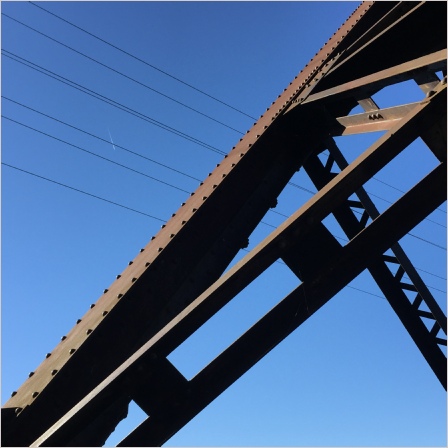
Photographs by Nick Storring
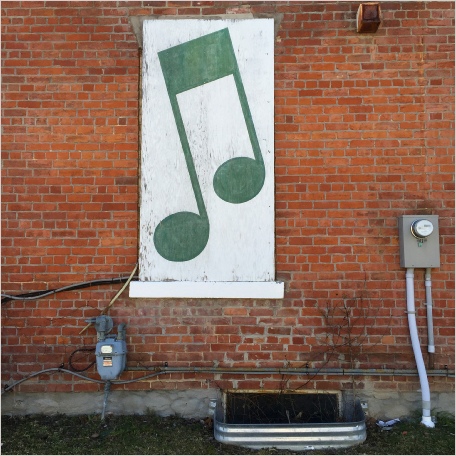

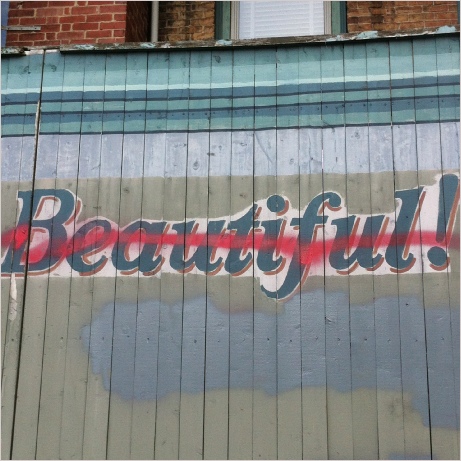

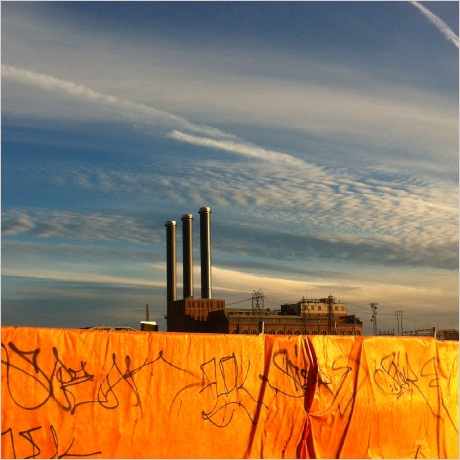
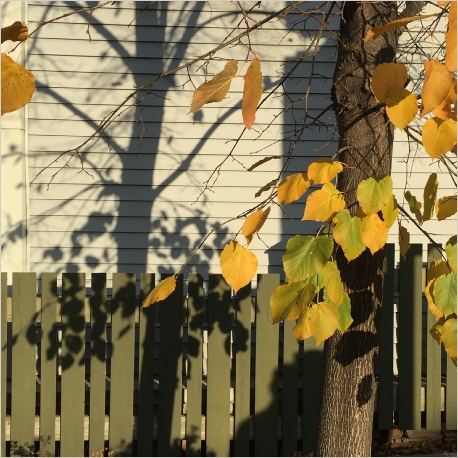
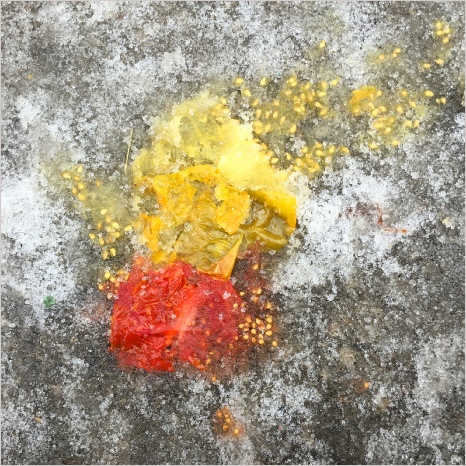
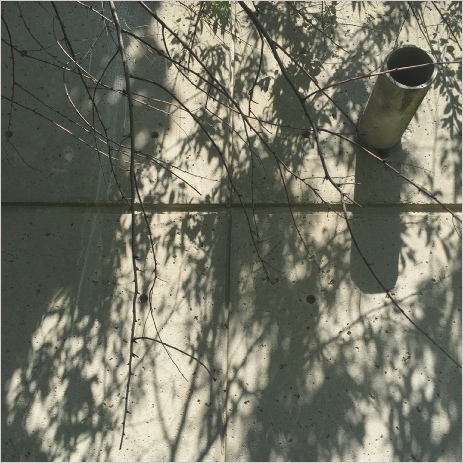


The major international schools of musical thought—the aforementioned -isms that have now achieved historical posterity—are largely the product of the cultural climate of Continental Europe and the United States. English Canada's position in this aesthetic arms race, meanwhile, was what some would deem quintessentially Canadian: peripheral and observational. (N.B.: I specify English Canada because, Québec, maintains strong ties to France, amidst its own uniquely Québecois musical environment). While there likely were some Canadian composers-theorists vying for world domination with their own iconoclastic systems, a more common tendency was to quietly gather these and other ideas and attempt to synthesize them.
At the very time that many of these radical frameworks were beginning to explode into the broader artistic consciousness post-war, Canada's creative factions were preoccupied in a number of ways. Amidst a crisis of national identity, insularity was strong, which even elicited a sort of protectionism—particularly when it came to American influences. The 1951 Massey Report was a culmination: both of these anxieties, and of a two-year commission of considerable scope that extensively surveyed the state of country's cultural milieu. As musicologist Jeremy Strachan notes (1), the report's findings and subsequent impacts were convoluted and manifold. On one hand it precipitated the emergence of a significant number of national institutional resources that continue to support, and preserve Canadian art-making today. It also, for better or worse, fortified the nation's inward focus—toward the gaping distances, and cultural disparities between our different regions, arguably at the expense of full participation in the global scene.
As much as this disengagement has certainly birthed some regrettably parochial material, the sense of detachment from the competitive hubbub coupled with the aforementioned magpie tendency has been a key factor in cultivating unique Canadian voices.
Ann Southam (1937-2010), for instance, came of age just after the commission's findings were published and remained restlessly inquisitive until last work, producing everything from gentle electroacoustic works to pulsating post-minimalism informed by Nova Scotian fiddle music. (2) The Eve Egoyan recording of her contemplative late piano work Simple Lines of Enquiry thrust her into the international critical sphere, and revealed yet another idiosyncratic approach—applying her patiently-unfolding processes to the dark-hued harmonies of a twelve tone row.
Southam was contemporaneous with figures like Philip Glass, and Helmut Lachenmann whose iconic brazenly avant-gardist musical languages inspired everything from mimicry to heated debate, yet her output embodied a different model of individualism. Neither bound to one particular method of composition, nor seemingly by a sense of obligation to overthrow existing aesthetic positions, her contributions exude a deep compassion and curiosity for music as well as a confidence with her own peripherality.
Egoyan notes : "She's a composer who's kept a really unique voice. She does write pattern music but she's been doing it in her own way for so long that she is her own school. ... [I]n that way for me she is a feminist—she has a very strong creative personality that has nothing to do with schools that are often forefronted by men."
—————
Composer and beloved pedagogue Rudolf Komorous (b. 1931) has been a crucial agent over the years in mobilizing radical liminality.
Komorous was born in the Czechoslovakia where he became the sole musical member of quasi-dadaist instigators Smidra. Employing impish, surrealistic humour, Smidra was named after a secondary character from Czech children's folktales. As his former student, composer Martin Arnold, puts it in a 2004 Musicworks article "Smidra is, as Rudolf puts it, "incredibly dumb—incredibly dumb as a proper sidekick should be; always doing wrong things." Rudolf is, at the same time, emphatic about the seriousness of the culturally subversive intent of this group of artists. It was both provocative and polemic to purposely take on such a self-deprecating set of associations, invoking a character stumbling around impotently, generating unintended chaos at the margins of heroic deeds..." (3)
Moving to Canada in 1969 he joined the University of Victoria music faculty in 1971 where he mentored a number of notable composers: Linda Catlin Smith, Arnold (both of whom are collected here), Christopher Butterfield (teacher to, among others, Cassandra Miller and Alex Jang), Allison Cameron, Rodney Sharman, Stephen Parkinson, John Abram, Anthony Genge, and Owen Underhill.
One of the fundamental tenets of both his artistic pursuits and his teaching is estetiku divnosti, the "aesthetic of the strange" or (as it was serendipitously mistranslated from a German program note) "the aesthetic of the wonderful." Arnold explains the potent congruency of this interpretive error with Komorous' magical thinking: ""Wonderful" embraces the innocuous, being a hackneyed term of appreciation, a limp superlative, while at the same time embracing a range of reactions and actions that can be variously synonymous with other words like delight, amazement, astonishment, bewilderment, curiosity and questioning. And it can name an historically complex category which, most profoundly in the Middle Ages, belonged to that crucial area between the known and the unknown—between the mundane and the divine miraculous. In this latter context, "wonderful" denotes the passion of wonder in the presence of wonders, and whole orders of marvels—preternatural objects and occurrences [...] Rudolf taught from the perspective of the estetiku divnosti, pointing at the wonders scuttling around the edges of a great well-known music. Of course these observations took a non-hierarchical form" (4) There's an intriguing interplay between this anti-canonical pedagogical orientation and the aforementioned de-rigeur-provincialism in Canada.
The astuteness, charisma, and lucidity with which Komorous expounded his philosophy is widely noted. Yet the humility and pliability of his "doctrine" (if such a sturdy word is even applicable in a case like this) means that it assumes many forms in the hands of his pupils. As Arnold's quotation implies, perhaps more than asserting a specific way of manufacturing or formalizing musical materials, Komorous suggested strategies for listening, and attending to music—both that of others and one's own.
A 2010 Globe and Mail interview with journalist Elissa Poole (5) indicates that his compositions extend a similar open-endedness to audiences: "I like art to be ambiguous." says Komorous "It gives the listener choice. It touches people more because they get it their own way."
—–
The predilections of his students, and even the students of some his students, make it tricky to appraise their work with familiar evaluative schema. The music actively deflects and defers questions of craftsmanship, logic, intellectual rigour, and conceptual tautness in favour of unvarnished anomalousness.
Depending on which piece one hears, initial encounters might lead one to characterize this corpus as "quiet" or "sparse." Yet dwelling on these traits not only ignores the stylistic breadth of the music united under this tenuous umbrella. It also distracts from its underlying spirit.
Soft, brittle sonorities and pronounced use of space are but two of many devices employed by these artists to establish a certain kind of rarefied perceptual perimeter around the music—a sort of buffer that asserts a focussed mode of listening but hyper-sensitizes the ear to all manner of befuddling minutiae.
Allison Cameron (b. 1963)'s opus is readily mined for examples of such unexpected sonic circumstances. Her 1986 break-out composition Raw Sangudo (composed while she was still a student at University of Victoria) leaves a trumpet soloist relentlessly blaring away in their uppermost reaches of pitch and volume for large stretches of the piece. While it's incredibly physically demanding, the scarcity of material trades virtuosity for a protruding, denuded awkwardness. In R from the Allison Cameron Band's self-titled album for Rat-Drifting (an erstwhile label and series spearheaded by Martin Arnold and Eric Chenaux), numerous pungent sonorities compete for the foreground, amidst a series of plodding detuned guitar notes. The obtuse aggregate of sounds only becomes less scrutable the more you listen.
—–
Joining Christopher Butterfield and Linda Catlin Smith, Martin Arnold (b. 1959), was one of several Komorous students along with Cameron, that relocated to Toronto in the late 1980's after they finished their schooling.
His music also exhibits a fixation on unusual aural bouquets, and finding ways of sustaining the potency of their fragrances. Accordingly, many of his pieces and endeavours hinge on surprising—even audacious—timbral or instrumental combinations, ones that reflect his unbridled eclecticism as a listener. This may produce a novel surface but the underlying motivations for those decisions are a far cry from novelty. In 1995 (5), he remarked the following of his mind-bendingly convoluted doctoral piece Burrow Out; Burrow In; Burrow Music "... I do not think this music sounds like anything else available for one to listen to." He tempers this bold claim: "[...]The piece is not intended to be demonstrative but rather placidly elusive; it is not meant to sound recognizably innovative but rather disorientingly (but quietly and good-naturedly) perverse." (6)
This statement could easily be said about much of his output, and that of many of his peers.
Tam Lin (2003) is one of multiple works of his derived from folk music. Its sprawling unkemptness presents a sharp stylistic contrast with the intimacy of the pieces collected on The Spit Veleta but it's no less emblematic. Composed expressly for stalwart Toronto ensemble Arraymusic (of which Arnold is now Artistic Director) plus The Draperies (an improv trio consisting of singer-songwriters: Ryan Driver, Eric Chenaux and Doug Tielli) it threads strands of the titular folk tune through a dense, partially-improvised polyphonic thicket. Even the score itself encompasses numerous tactics: standard notation, jazz chord changes and instructions. Its massive undifferentiated tangle may occupy a wide aural scope, but its presence is still achieved through strange and subliminal means. Offering as much to listen to as to listen through it holds the ears in rapt perplexity for its near 40-minute duration.
Points & Waltzes, the solo piano work which opens The Spit Veleta CD is a far more sober and introverted affair. Its spindly intertwined melodies gently tumble about, producing an aura of twitchy conviviality. Part way through, this light enigmatic dance ends, ushering in the saturated resonance of tightly packed chords. These more intermittent tollings may not have the same meek whimsy, but they still carry a residual sway in their pulse.
The disc's title track, a violin and piano duet begins laced with the same fidgety eccentricity. Equally porous and meandering, the occasional familiar lilt of its phrases gives it a slightly more innocuous sing-songy character. Eventually, the duo settles into a very slow series of sustained chords that feel like drawn out clumps of the prior material. The substance of this surprising turn occupies the majority of the piece and gradually thins out towards the end. The elongated, reduced nature of these gestures might invite comparisons to work by the Wandelweiser group (with whom Arnold does indeed collaborate and associate), however, there's a more deliberate, obstinate edge to his presentation of these sounds. Less breath and less import accorded to each individual moment.
—–
One of the primary tensions in Linda Catlin Smith's (b. 1957) music is between its equal and simultaneous drive toward abstraction and lyricism. On one hand it's on account of this elusiveness that her work endears itself so readily to new listeners. On the other, this ambiguity of intention can prove alienating.
The titles of her works gesture toward pastoral themes, landscapes, and even at times classical forms but this is both telling and misleading. A 2008 interview with composer Christopher Butterfield published in Musicworks is similarly full of natural allusions, but she's also very matter-of-fact about her questionable relationship to both form and narrativity. "Does walking through the woods mean anything?" she says pointedly. "No, it's an experience, and it's filled with all kinds of potential meanings, but there's not a single meaning that everyone's going to "get."" (7)
Elsewhere in the same article she notes: "I love melody and I love harmony, but I like to mess about with them a little bit. I feel happy if I'm working melodically or I working with harmony, but I sever the connection to whatever logical way you might expect it to work, or sever the expectation that it's going to do a certain thing; that's what I mean by "mess about with it." I feel like it's got connections to the history, but those connections are not necessarily obvious or in a progression. I try to get myself into a state of not knowing with those things: not knowing exactly what I'm doing."
Those who gravitate first and foremost to its alluring melodic contours and expect it to unfold along a familiar lines will struggle when confronted with its decisive lack of dramatic arc or formalized development. Conversely, those who are initially repelled by this same appearance are apt to be won over by its singular lucid-dream atmospherics and nebulous formulation.
Smith's staunchly intuitive compositional approach, mastery of temporal suspension, and poised, perspicacious orchestration positions her work in proximity to Morton Feldman. Feldman is arguably a forebear to most, if not all, of the composers represented in this collection, yet Smith has had considerable first-hand contact, having attending some of his lectures by invitation and contributing liner notes to the definitive recordings of his string quartets.
Though the delicacy of Feldman's music is notorious, it's important to recognize that his innovations are haunted with the spirit of competitive confrontation that afflicted a lot of 20th century artistry. Feldman was a modernist of the most strident and vehement strain. It may be devoid of the violent tenor of the Transatlantic rivals he so loved to taunt (Boulez, Stockhausen et. al) but his oeuvre nonetheless constitutes a sort of call-to-arms, and betrays his yearning for aesthetic exemplarity.
Linda Catlin Smith has great admiration for the late composer, and echoes some of his superficial concerns, but she's far from a disciple. Rather, spurred on by Komorous' disdain for hierarchy and enthusiasm for the ambiguous and the marginal, she, embodies the assured freedom mentioned earlier in reference to Southam. Her thinking gives as little regard to revolutionary posturing as it does to rigid traditionalism. Its orientation is inclusive but in a way that welcomes disorienting frictions with familiarity, rather than courting bland reconciliatory hybridity.
The music collected on the Another Timbre CD Drifter offers an unusual yet illustrative peregrination through her sizable catalogue. Folkestone is an episodic 33-minute string quartet from 1999 and although it's one of her more austere-sounding pieces, in some senses it epitomizes what is both strange and beautiful about her work. Opening with a motive that dances softly between two chords, suddenly a persistent, yet exceedingly gentle, high note joins the figure, following its rhythm. The sharp registral contrast is as immediately striking as the complication it poses to the otherwise transparent harmony. The interplay of this oscillation unfolds more, encompassing some small developments, but in less than a minute and half it simply vanishes. After a generous silence, a similar texture appears, but clearly distinct as well—neither an extension nor variation of the previous section. The piece continues in this continuously expository manner, unveiling small musically rich passages, each resembling one another, each feeling disjunct, each of apparently equal formal value. It's as though they could be presented in any order. When finally, 24 minutes in, material arrives that tangibly resembles the opening, the listener expects it so little that the feeling of recognition itself acquires a sort of bizarre newness. The penultimate statement, featuring a long, ultra-high violin melody takes this sense of reacquaintance and elegantly prolongs it.
———
Much like Smith, who teaches composition both privately and at Wilfrid Laurier University, Christopher Butterfield (b. 1952), another composer and Komorous pupil, is deeply involved with pedagogy. As the current head of composition within University of Victoria's Faculty of Music, he's committed to fostering a supportive and open-ended learning cultured (as described by Cassandra Miller and Alex Jang in their interviews).
"As a composition teacher, I listen, and listen, and listen." Butterfield relays via email. "I wait to hear ideas. Once alive, the ideas may lead to a hundred different things: images, movement, objects, sounds, stories, events, science, history, authors, composers, artists, geography, poetry. The composer has to be able to move through as many fields as possible, in order to set the ground for the piece of music they’re writing. This is not to make a program for the piece, rather it’s to make the imagination resonate in ways that help compose something that will have its own life."
"They say one teaches the way one was taught. I think that my approach is like Rudolf Komorous’ when I was his student. He was always interested in what one brought to lessons, even if it was only two notes – there was lots to say about two notes. And he was interested in unlikely composers. He liked Chopin. He talked, with affection, about ‘the divine stupidity of Puccini’. He loved Webern. And Hauer. It was hard to tell if he preferred Smetana or Janacek. He loved jazz (Stan Kenton’s band was his favourite). He understood Cage. He loved Mondrian, Bronzino, and Malevich. And Roussel, de Lautréamont, and Huysmans. And detective novels (he introduced me to Ross Macdonald). He thought ‘American Psycho’ was brilliant. Above all, he thought that composition was an act of the imagination. Which I continue to do, myself."
Victoria is tiny next to Toronto, which recently overtook Chicago as North America's fourth most populous city. Where acquiring a real sense of the latter requires prolonged immersion—it's at once rightfully metropolitan-feeling, and puzzlingly smalltownish—Victoria has a more distinct atmosphere. The friction between its genteel capital-city orderliness, and archetypal island-city non-chalance presents a contradiction that's somehow deeply and essentially Canadian.
The scope of Butterfield's influence extends well beyond Miller and Jang. André Cormier, who also worked with Wandelweiser founder Antoine Beuger and James Tenney, is another noteworthy student who has produced a fascinating and varied body of work. Daniel Brandes is currently a crucial part of Victoria's tightly-knit contemporary music community. Like Cormier, he also traveled to Germany to work with Beuger privately, but subsequently joined the Wandelweiser collective. He and Laura Brandes now co-run the aptly-named monthly series A Place To Listen, where music from the local and national community intersects the diffuse one described by Wandelweiser. Christopher Reiche, who studied with both Butterfield and Linda Catlin Smith, also has parallel compositional-curatorial streams in his practice. He's currently the New Music Coordinator for Open Space gallery—a veritable contemporary art institution in Victoria since the mid 1970's. Kristy Farkas followed the same path as Reiche from Laurier to UVic a few years before him, and also was his predecessor at Open Space. As both a composer and performer, she's another key fixture in Victoria's current musical ecosystem.
elritch Priest is another fascinating figure, if not only for his music, for his dizzying tract Boring Formless Nonsense (Bloomsbury, 2013)—perhaps the closest thing to a manifesto this vague group may have seen yet. Of course, remaining true to form (or lack thereof), this preposterous, psychedelic slab of musicological magick certainly isn't applicable to everyone in question presently. Nonetheless it reveals pertinent themes that are both latent within and integral to this body of work, often by way of citing some of its most intriguing exponents. The text itself, although totally engrossing, is laden with obstacles to full comprehension: distractingly enormous footnootes, half-truths and, at its most colourful, parallel columns of conflicting text.
———
There's an subtle tinge of impish mischief to Cassandra Miller's (b. 1976) work, a quality that's also very much present in Butterfield's dada-informed practice. Yet, just like in the case of Martin Arnold's forays into near-abject weirdness, any unintended novelty generated by these more dramatic gestures ends up dissolving gradually and imperceptibly into the wondrous fabric of her music.
Her transparently-titled Concerto for Violin and Blindfolded Ensemble (a set of extravagant competitions), alongside Duet For Cello and Orchestra, is one of two works of hers that subvert the in-built theatrics of the concerto genre. As Toronto critic and musician Andrew Timar notes of the former, "[it] explored the complex ways emotion engages with virtuosity and with concert conventions [...] Eliminating the sense of sight from the work seemed not to be a mere gimmick, however, but an integral aspect of the philosophical underpinning of the work’s performance. Judging from the fluid music-making the score engendered, this blind strategy appeared to enhance musical collaboration between the performers, a process the composer calls “o-operative listening.” (8)
Bel Canto, winner of the prestigious Canadian Jules Léger Prize for New Chamber Music, isn't quite as histrionic, but, as a portrait of Maria Callas for mezzo-soprano and ensemble it does call for some specific dramaturgical details. Her performance notes read: "When material repeats, every detail of inflection, articulation, dynamic, and indeed also the physical motions of the performer [Miller's underlining] - all should strive to mimic the first instance as precisely as possible. This remains the case even when the tempo changes between iterations." When these performative tics enmesh with the work's stubborn repetition, and wobbling glides of the instrumentalists, it imbues the performance with an indelible yet subliminal surreal quality.
Bel Canto also points to another major feature of Miller's work. Many of her pieces disclose strange meditations on her own listening—scrawled annotations in the margins of existing music. She'll zero in on subtle details that she excavates from particular recordings—quirks, imperfections, lingering impressions or the latent tendencies of a given performer—and find some strategy to amplify or extend them. For many composers, quotations offer little more than a cheeky gag, a reverent nod, or perhaps a vehicle for self-conscious po-mo commentary. Her angle is more nuanced—more about the ineffable experiential aspects of a given musical nugget, than its writ-large cultural contents.
For Mira, a solo violin piece dedicated to Mira Benjamin takes a chunk of a computerized transcription of Kurt Cobain's voice—rasp and all—as its starting point. Beneath its sharp spasms of coarse scratch, lunging glissandi, and luminous flickering harmonics, there's still the faint outline of melody. Philip the Wanderer, another solo work, bears another personal inscription—this time for pianist Philip Thomas. The heavily-obscured source material for this work is a short thumb piano piece from Mozambique. On her website she jokingly touts her "ability to pay absolutely no respect to the original context of the source material" and, just like in the case of For Mira the material used the work is mere background. The piece's pianistic language is so personal and fresh — full of mystifying opaque clangour and shards of impressionistic sparkle— that one would be inclined to believe her claim in her program notes that the exoticism of the piano (in the sense of it being external to her personal narrative), is equivalent to that of the African recording upon which the piece is based.
———
Alex Jang (b. 1988) is the youngest composer compiled here yet his music still teems with personality. After completing his primary education at UVic he shifted to Huddersfield, where he worked with Bryn Harrison (whose work is found elsewhere in Another Timbre's catalogue) and Aaron Cassidy. He's now back in Victoria and is an active participant in the small, predominantly young creative community there.
Although it leans noticeably toward a sort of reductionism, Jang's recent music is suffused with many different influences. Certainly his contact with Wandelweiser, partially through his immersion in the A Place To Listen series, has made a clear impression on his sensibility — sheer textures, slow tempi and exceedingly and unrelentingly soft dynamics. Yet his relationship there is akin to what many witness within the Toronto contingent where one hears a plethora of personal approaches orbiting an tangled set of related concerns. That is, although Jang's whispered soundworld might superficially evoke Beuger, Frey et. al it encourages a completely different mode of listening. A work like Frey's second string quartet seems to pull the ear progressively closer throughout its long series of individual breath-like sonorities. Constrastingly, Jang's melodies appear to be floating away from the listener, eluding their reach. It may demand a similar level of concentration, but it's on account of its delicate uncertainty rather than an inward unidirectionality.
Perusing the modest score for any three players reveals the source of some of this inbetweenness—simultaneous focus and deliberate lack thereof. Its gentle, lowercase preamble requests the perform treat "each note for itself, and (somehow) always connected to the next note"—accurately descriptive of the ensuing melodic waftings. Its call, as well, for "more or less" rhythmic unison also leaves room for a sort of "slackness", as Martin Arnold might call it.
The program note for a more recent work, a gray, bent interior horizon plainly states the composers' own attraction to "a fundamental ‘between-ness,’ where ... paintings inhabit a borderland between representational and abstract art." He continues, asking "how does a piece of music inhabit borderlands? What are the gray areas between sound and silence – tone and timbre – movement and stillness?" Unlike the simple notational articulation of any three players or distributed tourism, this piece's handwritten score is quite prescriptive, especially from a technical standpoint. It still, however, invites a significant amount of of performer-input.
——
James Tenney's (1931-2006) renowned artistic contributions should require little introduction. His indispensable educational role within Canadian experimental music circles, on the other hand isn't quite as widely known outside of the country.
Tenney held a teaching position at Toronto's York University from 1976-2000 where he became one of the primary and longest-standing representatives of the experimentalism the school had established in its heyday with instructors like David Rosenboom (who taught there 1972-1979) and Richard Teitelbaum (1973-1976). Throughout his 24 years at York, he taught a diverse number of unique artists, among them Jesse Stewart, Tina Pearson, Mike Kane, Graham Flett, Nic Gotham, Josh Thorpe, Robert Wannamaker, Paul Swoger-Ruston, Gayle Young and Allison Cameron (who also worked with Komorous).
The scientific rigour (or, as Wannamaker might term it, the North American Spectralist bent) of his teaching might seem, at first blush, to differ drastically from Komorous' psychedelic eccentricity, especially in the way that it privileges logic. (9) Yet it's crucial to recognize that the harmonic series, the crux of Tenney's thought, is a natural and perceptible phenomena. In other words, where Komorous might've suggested an usual model for listening or unusual configurations of repertoire, Tenney might, instead, have been inclined to expose some peculiar psychoacoustic anomaly. Both of them, however, as composers and teachers, did espouse a methodology rooted in the tangibly acoustical—the wonder of sound—as opposed to an arbitrary matrix of intellectual abstractions. They ignited different and complementary aspects of the same fundamental curiosity.
A quote Chiyoko Szlavnics from a 2007 memorial article she wrote about Tenney, encapsulates the connection between her teacher's rigour and sense of wonder: "...[I]f Tenney's artistic stance was one of austere focus on pure idea and pure sound, he was nonetheless possessed of great personal warmth... His joy in the human experience, his incessant and infectiously positive spirit, and his ability to clearly articulate both simple and complex ideas made Jim one of the most vibrant, informative and inspiring figures for so many musicians and composers over the past few decades" (10)
——
Chiyoko Szlavnics (b. 1967) is a Toronto native but has since moved to Berlin following a 1997-98 residency at Akademie Schloss Solitude.
Szlavnics's primary palette is stands out among the other Canadian Series participants, especially those mentioned thus far. The title of her 2006 work Gradients of Detail is emblematic of these distinct sonic proclivities. By and large, she deals with sound—particularly its frequential dimensions—in a patiently shifting, if not continuous, manner, through series of unique and woven-together billows of quiet dynamism.
Many of her pieces, including two of the works on the During A Lifetime album, are effectively translated from drawings that she makes. Often consisting of interleaved matrices of fine lines, it's easy to grasp how their structures serve as foundations for her music. Several of them seem to hint at an illusory world of perspective that exists between two and three dimensionality, evincing depth and flatness simultaneously. The vivid modulations that arise from the tonal masses she creates skew the spatial reality of the listener in a similar manner. The notion of a "rarefied perceptual perimeter around the music" was introduced earlier in reference to Komorous' pupils but this is no less applicable here. The pronounced tension between ostensible stasis and constant movement, between singularity and multiplicity of sound incite a similar mix of focus and bemusement in the listener.
The impetus behind her work relates to Tenney's quasi-scientific conception of experimentalism, whereby compositions constitute experiments; testing grounds that effectuate a sort of personal investigative procedure. She's careful to distinguish this mode from theoretical constructs: "As a legacy of my university training, I still open books of theory and try to understand what it is about, that theoretical knowledge, which academics want to establish so firmly," she says to Julian Cowley in a 2014 interview. "Why should I reject it, or why am I still grappling with it? There's a strange tension between having some knowledge based on conservative canons and rejecting it, for whatever reason. We have certain science that explains things for us theoretically, but it doesn't really help up with our personal experience of those things. When one experiments, and makes discoveries oneself, the phenomenal world feels so much more alive than if you are limited to an academic theory. There's something so inspiring about that direct experience. What I'm always striving for in my work is that something, that spark which you can't see beforehand, which is quite magical when it occurs." (11)
The title work of her Another Timbre portrait compilation did not, in fact, emerge from graphical representation initially, yet its relationship to her ongoing inquiry into sound is tangible. Scored for saxophone quartet and sinewaves the surface of its soundscape is one of cool limpidity. Soft undulating forms swell and recede, into and out of audibility—each one similar, yet each unique. Upon every arrival, they hover, turning gently, presenting every angle to the listener. Sometimes they grow or bifurcate as they linger. Sometimes these arrivals and departures are more instantaneous.
The sound of Reservoir (2006), originally created for Ensemble Zwischentöne, is both murkier and more variegated, the entries and exits generally more blunt. A certain urgent momentum courses through the work, witnessed in its wide dynamic range.
——
It might seem convenient to frame the music of Marc Sabat (b. 1959) solely in terms of its intensive underlying mathematical principles, both in light of his study with Tenney, and the aforementioned slant in historical narratives toward avant-garde notions of innovation.
Sabat operates within his own personal derivative of just intonation, and has even collaborated with fellow microtonal composer Wolfgang von Schweinitz to build a notation system that maximizes both visual legibility and sonic exactitude. Yet to fixate upon this aspect conceals at least half of what makes his music so beguiling and beautiful.
From a strictly aural perspective, what's most salient about his work is not the system itself but his fluency and fluidity within it. Part of this is surely attributable to his deep insight and compassion surrounding performance. Prior to his shift from to Toronto to Berlin (within the same Schloss Solitude cohort as Szlavnics) Sabat was revered as a violinist. He was a member of numerous new music ensembles including Arraymusic, the Modern Quartet and Critical Band, and with pianist Stephen Clarke made definitive recordings of work by Christian Wolff, Maria De Alvear, and Morton Feldman. The two also appeared on compendia by Linda Catlin Smith, Barbara Monk Feldman, and Allison Cameron.
In one of the three pieces collected here, Euler Lattice Spirals Scenery, one certainly hears the fruits of his tireless exploration of pitch, but you would never mistake its 30 minutes for some sort of study. Rather than unfolding an objective survey of various tonal possibilities, his rich treatment of the string quartet as a medium brings the listener into close proximity with the palpable joy Sabat experiences in discovering these sonorities. It's anchored in a reflective, unhurried temporality, but full of radiant blossomings of sound; wild sparkling eruptions in the instruments' highest registers. Jean Philippe Rameau, another quartet from the Harmony disc, offers a more consistently introverted gestural language applied dimmer harmonic hue, but the results are equally stirring.
Elsewhere in his sizable opus, there's even more variety of approach and of sound. 2012's Lying in the grass, river and clouds for piano, sinewaves and a mixed ensemble of 14 instrumentalists is slow and majestic, yet spectrally restless, the timbral and harmonic vista constantly refreshing itself. Surface slips away, according to Sabat's score posits "the echo of an imaginary trio sonata for solo basso continuo ensemble." Composed for the peculiar trio of cello, bassoon and steel-string guitar, its astringent colour scheme might surprisingly suggest an even-tempered Partch or a more contemplative Dreyblatt.
Berlin may indeed be Sabat and Szlavnics' base now, but their strong roots and affiliations in Canada and the elusive specificity of their artistic voices provide clear points of connectivity within this nebulous network.
——
Montréal-based percussionist and composer Isaiah Ceccarelli's (b. 1978) training is decidedly jazz. American drummer Ed Shaugnessy (of the Tonight Show) was his primary mentor, after which he had stints at Berklee in Boston and the Paris Conservatoire's jazz program. In 2003 he moved Montréal where he was welcomed into the multifaceted creative / improvised music scene there, within which he managed to gradually nurture his compositional interests. By the time he released his second album Bréviaire d'épuisements (Ambiances Magnetiques, 2010) his current and very distinct identity as composer had started to surface, blending Renaissance-derived melodic gestures (Ceccarelli is also a self-taught but active choral singer), timbral investigation, and affording considerable agency to the performers.
His participation in the 2012 edition of the Quatuor Bozzini's Composers Kitchen bolstered him and located him within broader concert music community. The Composers Kitchen is one of Canada's most crucial support initiatives for emerging exploratory composers (many mentioned here, myself included, have partaken as residents, or as mentors). The next year, when the quartet hosted Wandelweiser in Montréal, Ceccarelli was invited to join them as an external composer-performer, alongside Martin Arnold and Christian Wolff.
More recently he sought out private mentorship with Laurence Crane in London, a pairing that makes sense as one hears a related warmth, transparency, and economy in many of Ceccarelli's pieces.
The pieces collected on the album Bow offer a glimpse into several aspects of Ceccarelli's work. The opening St. Ursule duet between Ceccarelli and organettist Katelyn Clark places sour organ exhalations amidst sluggish, loping bell pulses: an enigmatic sonic assemblage that has an immediate yet disconcerting magnetism. Falsobordone is one of three pieces for small string groupings. There's a tidy lucidity in these three pieces that can also be witnessed in Sabat's work for similar forces, yet Ceccarelli doesn't engage with the same concerns surrounding intonation. Instead, Dunstable, Falsobordone and the album's titular piece offer a slow-motion lyricism, driven by luminous harmonies, rather than melodic shapes. Meanwhile, the two Oslo Harmonies (each duet between Ceccarelli and Mira Benjamin), engage with fine micro-sonic shadings, albeit through much more intuitive and improvisatory means than either Sabat or Szlavnics. Elsewhere in his catalogue, for instance in the 90-minute large ensemble piece Toute clarté m'est obscure, one sees all of these different aspects various aspects united.
"I know it may sound crazy," he said to me in a 2014 interview for Musicworks, "but I am interested in making beautiful music—music that sounds good. I'm not saying this just to be different, and it might not be in line with a lot of the reasons that people make music today, but I am actually not very involved with, or worrying so much about, a process—about how I write the music, or any kind of system. I just want the work to be inherently musical, and for musicality to be the main concern." (12)
——
Lance Austin Olsen (b. 1943) is more than somewhat of an outlier, he's all but disconnected from the apparent lineages and most of the communities that permeate this series, aside from a few tenuous links. Olsen's primary practice is as a visual artist—a well-regarded one at that: he's been Canada's ambassador at a number of biennials. His paintings feature on the covers of some of these albums and within the book that accompanies the set. However, his more marginal status within modern composition circles is a reminder of the overall marginality of all of the figures in this series. Everyone profiled here may have a community, mentors or peers, but fundamentally they're quite scattered both geographically and aesthetically, in spite of their common ground.
Olsen's auditory pursuits stem from directly from his work at the canvas, but it's different than the case of Szlavnics. Although Olsen has painted scores (such as the ones interpreted here by Apartment House), his urge to work with sound is much like spontaneous tactile impulse behind a brushstroke. It's the dynamic sense of contact between the oneself, the tools, the media and one's surroundings—of attending and responding to an overall picture. A large portion of his work is improvisational — often within particular circles of fellow players. His collaborators include Vancouverite Mathieu Ruhlmann who runs the caduc label, Joda Clément, Jamie Drouin, crys cole—artists who share his interest in magnifying small sounds and working with found objects. He also works electroacoustically, creating work specifically for recordings.
In contrast to someone like Martin Arnold who's a voracious listener, Olsen spent many of his mature years in virtual isolation from recorded music. Thus, from an aural perspective, his work draws from a literal, physical immersion in the natural soundscapes that surrounded him in that time. This offers insight into his attraction to abstract, yet highly organic textures.
Dark Heart, the long electroacoustic piece treats field recordings furnished Norwegian artist, Terje Paulsen. Olsen also layers in his own recorded expeditions, as well as his exploration of various instruments and objects, both electric and acoustic. The piece's title is illustrative of the tenebrous world it inhabits, yet's it neither macabre nor bleak. Rather it's a darkness that just is, like the blackness of an overcast night in the country. It offers a mysterious unfathomable space in which acquiring one's bearings is a difficult task.
——
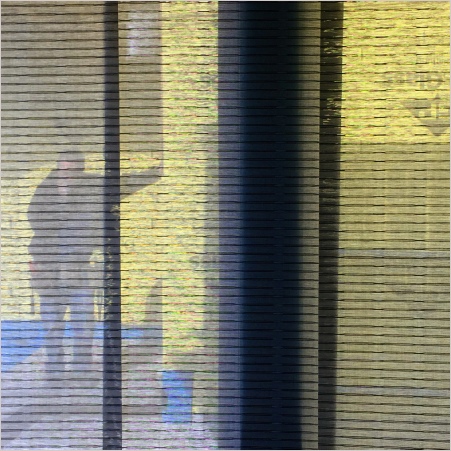
In a 2007 Wire Magazine article Marcus Boon, writer and professor at York University in Toronto made the outlandish yet evocative comparison of Canada to Gavin Bryar's early piece 1-2, 1-2-3-4. "...[It's] a composition in which a group of improvisors all play along with tapes heard through headphones that slowly go out of synch, creating a strange hallucinatory drift between the different performers." he writes, adding. "Which is sort of how Canada, a place terminally drifting away from itself, feels too."
That may sound like a grim appraisal on the surface, but if one considers in light of the Bryars piece's peculiar ethereal beauty, it takes on a different tenor altogether.
As much as Canadians don't seem to want to admit it, Canada's an unwieldy and inscrutable place, even (maybe, especially) for those that live here. Yet when Canadian artists manage to channel those contradictions, that instability of identity, those manifold questions through their work; when they manage to nudge all this confusion—even just slightly—into the domain of wonder, it opens the door for something powerful and magical to happen.
I'm very reluctant to peg this unquantifiable 'something'—this embracing of liminality—as uniquely Canadian. It's almost impossible to pin it down— there's no single, discrete way that this tendency manifests. And yet, by the same token, it's hard for me to deny that Canada's geography, culture, and overall strange energy play a role in encouraging this plurality of unconventional directions.
————
Nick Storring is a composer, musician and writer based in Toronto.
Notes:
(1) Jeremy Strachan,"Music, Communications, Place: Udo Kasemets and Experimentalism in 1960s Toronto." PhD dissertation, University of Toronto, 2015.
(2) Eitan Cornfield, "Canadian Composers Portraits: Ann Southam" (audio documentary), Centrediscs, Toronto, 2005.
(3) Martin Arnold, "Listening on the Edge: After Rudolf Komorous" in Musicworks #88, Winter 2004. Ibid.
(4) Elissa Poole, "Rudolf Komorous and the 'aesthetic of the strange'" in The Globe and Mail, June 16, 2010.
(5) Martin Arnold, "Observations About, Around and Beside Burrow Out; Burrow In; Burrow Music", Ph. D Dissertation, University of Victoria, 1995.
(6) Christopher Butterfield, "Linda Catlin Smith: Themes and Variations" in Musicworks #102, Winter 2008.
(7) Andrew Timar, "A Blindfolded Concerto and Audience Awards" http://www.thewholenote.com/index.php/other-media/blog/14238-a-blindfolded-concerto-and-audience-awards, November 26, 2010.
(8) Robert Wannamaker, "North American Spectralism: The Music of James Tenney" In Reigle, R. & P. Whitehead (Eds.), Istanbul Spectral Music Conference, Nov. 18–23, 2003, Istanbul, Turkey: Pan Yayincilik.
(10) Chiyoko Szlavnics, "Reflections on James Tenney" in Musicworks #97, Spring 2007
(11) Julian Cowley "Chiyoko Szlavnics draws the ear toward infinity" in Musicworks #119, Summer 2014.
(12) Nick Storring, "Isaiah Ceccarelli works the room" in Musicworks #119, Summer 2014
